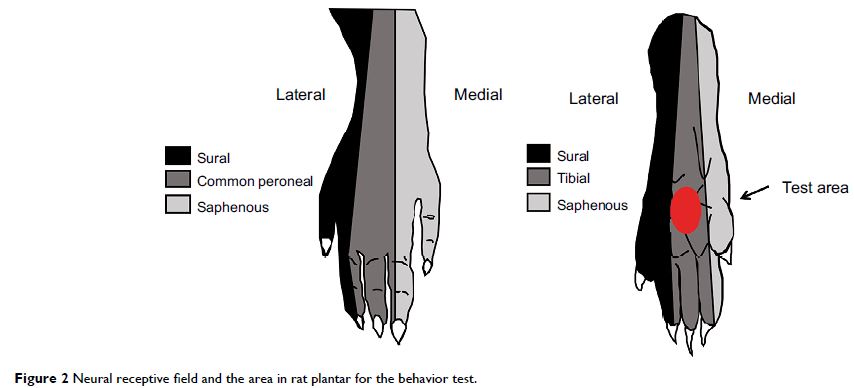9 0 5 7 8
论文已发表
注册即可获取德孚的最新动态
IF 收录期刊
- 2.6 Breast Cancer (Dove Med Press)
- 3.9 Clin Epidemiol
- 3.3 Cancer Manag Res
- 3.9 Infect Drug Resist
- 3.6 Clin Interv Aging
- 4.8 Drug Des Dev Ther
- 2.8 Int J Chronic Obstr
- 8.0 Int J Nanomed
- 2.3 Int J Women's Health
- 3.2 Neuropsych Dis Treat
- 4.0 OncoTargets Ther
- 2.2 Patient Prefer Adher
- 2.8 Ther Clin Risk Manag
- 2.7 J Pain Res
- 3.3 Diabet Metab Synd Ob
- 4.3 Psychol Res Behav Ma
- 3.4 Nat Sci Sleep
- 1.9 Pharmgenomics Pers Med
- 3.5 Risk Manag Healthc Policy
- 4.5 J Inflamm Res
- 2.3 Int J Gen Med
- 4.1 J Hepatocell Carcinoma
- 3.2 J Asthma Allergy
- 2.3 Clin Cosmet Investig Dermatol
- 3.3 J Multidiscip Healthc

应用慢性压迫性损伤的局部坐骨神经模型评估针刺镇痛
Authors Zhi MJ, Liu K, Zheng ZL, He X, Li T, Sun G, Zhang M, Wang FC, Gao XY, Zhu B
Received 10 April 2017
Accepted for publication 4 August 2017
Published 19 September 2017 Volume 2017:10 Pages 2271—2280
DOI https://doi.org/10.2147/JPR.S139324
Checked for plagiarism Yes
Review by Single-blind
Peer reviewers approved by Dr Colin Mak
Peer reviewer comments 2
Editor who approved publication: Dr E. Alfonso Romero-Sandoval
Purpose: To validate and explore the application of a rat model of chronic
constriction injury to the partial sciatic nerve in investigation of
acupuncture analgesia.
Methods: Chronic constriction injury of the sciatic nerve
(CCI) and chronic constriction injury of the partial sciatic nerve (CCIp)
models were generated by ligating either the sciatic nerve trunk or its
branches in rats. Both models were evaluated via paw mechanical withdrawal
latency (PMWL), paw mechanical withdrawal threshold (PMWT), nociceptive
reflex-induced electromyogram (C-fiber reflex EMG), and dorsal root ganglion
immunohistochemistry. Electroacupuncture (EA) was performed at GB30 to study
the analgesic effects on neuropathic pain and the underlying mechanisms.
Results: Following ligation of the common peroneal and tibial
nerves, CCIp rats exhibited hindlimb dysfunction, hind paw shrinkage and
lameness, mirroring those of CCI rats (generated by ligating the sciatic nerve
trunk). Compared to presurgery measurements, CCIp and CCI modeling
significantly decreased the PMWL and PMWT. EA at GB30 increased the PMWL and
PMWT in both CCI and CCIp rats. Calcitonin gene-related polypeptide and
substance P expressions were apparently increased in both CCI and CCIp groups,
but were not different from each other. The C-fiber reflex EMG of the biceps
femoris was preserved in CCIp rats, but it could not be recorded in CCI rats on
the 5th day after nerve ligation. The C-fiber reflex EMG was reduced at 0, 1,
and 2 minutes after EA in CCIp rats, but only at 0 and 1 minute after EA in
normal rats.
Conclusion: The CCIp model is better than the CCI model for
studying acupuncture analgesia on chronic neuropathic pain and the underlying
mechanisms.
Keywords: neuropathic
pain, chronic constriction injury, acupuncture, analgesia, C-fiber reflex
